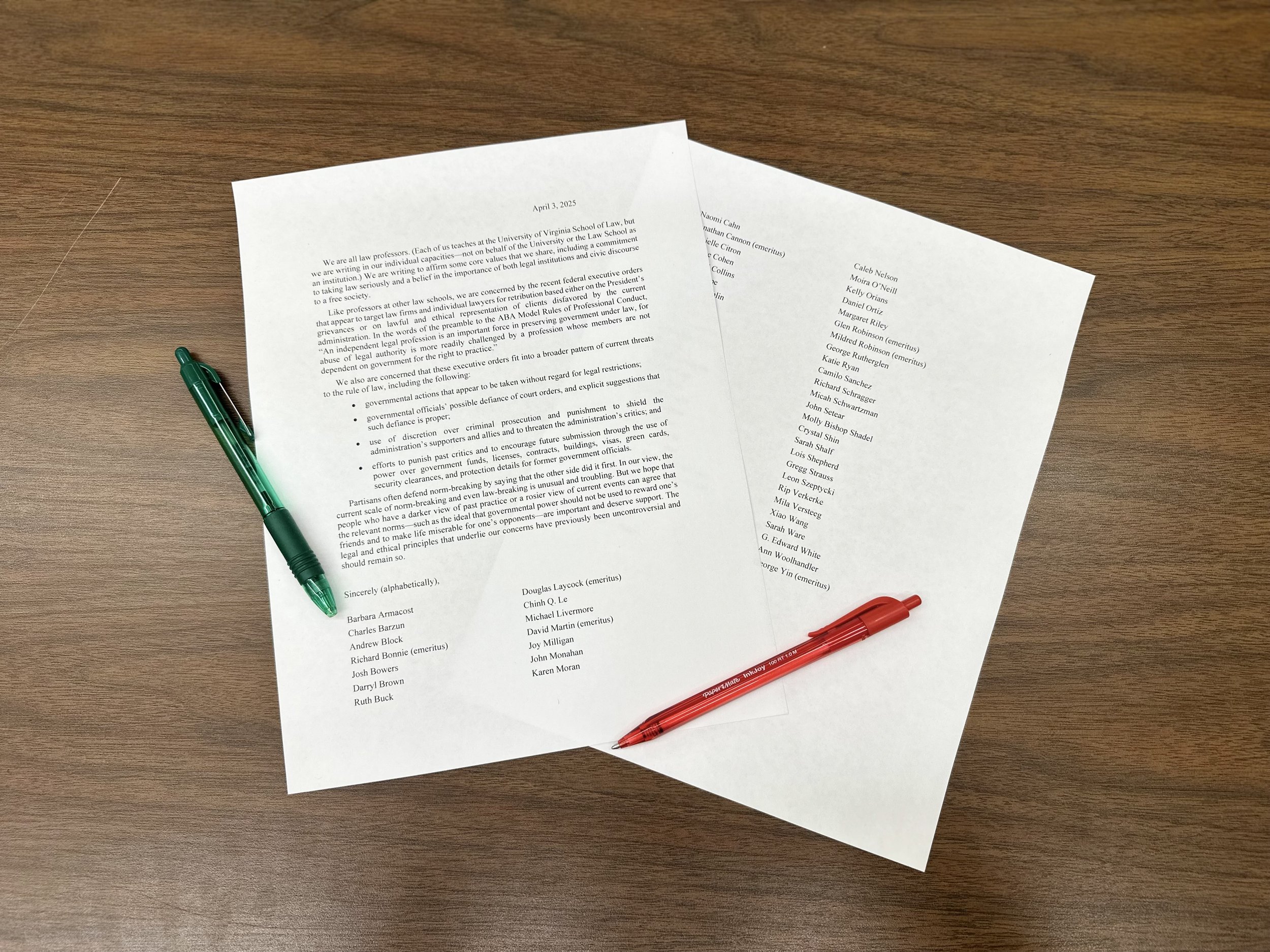Faculty Responds to Executive Orders
On Thursday, April 3, a group of Law School faculty published a collective letter responding to the Trump administration’s executive orders targeting law firms and the legal profession. Sixty-eight out of the Law School’s approximately 115 faculty members signed in their individual capacities. Signatories included tenured, emeritus, and general (tenure-ineligible) faculty members. “We are writing to affirm some core values that we share, including a commitment to taking law seriously and a belief in the importance of both legal institutions and civic discourse to a free society,” the professors wrote.
Professor Wang Talks SCOTUS Arguments, Clinic’s Future
Professor Wang argued the two cases, Cunningham v. Cornell University and Ames v. Ohio Department of Youth Services, just months ago, marking his first two oral arguments in the Supreme Court. Back from his stint at One First Street, Professor Wang kindly agreed to an interview with the Law Weekly to discuss the Clinic’s work and its future.
Journal Credit Coalition Hosts Town Hall
Last Thursday, the journal credit coalition, led by Kasey Michaud ’26, hosted a town hall for students to learn more about the proposal and discuss their opinions. The event was well attended and the organization reported that students shared useful feedback and concerns. The coalition is currently working on finalizing their proposal.
Journal Receptions
UVA Law’s student-run journals held receptions throughout the past week to aid 1Ls as they decided which journal to join. I shall speak to the two receptions that I attended: the Journal of Law and Politics (“JLP”) and the Virginia Journal of Law and Technology (“VJOLT”).
42 Years of an Iconic UVA Law Tradition
The 42nd Annual UVA Law Softball Invitational was a huge success this past weekend, April 4–6. It began on Friday afternoon when Dean Leslie Kendrick ’06 and UVA President Jim Ryan ’92 threw simultaneous first pitches, both right over the plate. The tournament raised over $45,000 for ReadyKids, a local nonprofit that provides counseling, family support, and early learning opportunities for children in Charlottesville. And it was the largest in the event’s history, hosting 82 teams from 42 law schools across the nation. Teams from the University of Florida Levin College of Law and the University of Pennsylvania Carey Law School won the Co-Rec and Open Division Championships, respectively.
Welcome to Spring
Last Tuesday, April 1, the Student Bar Association (SBA) and the First Year Council teamed up to throw a Spring Carnival—the perfect way to take a break before the stress of exams set in. It was a day full of sunshine, good vibes, and a chance to finally enjoy the warmer weather and the blooming trees in Spies Garden.
Can the President Cancel an Agency?
On Tuesday, March 18, the Karsh Center for Law and Democracy hosted “Can the President Cancel an Agency?” with Professors Daniel Ortiz and John Harrison ’77 (B.A.). This was the second of three panels on Trump’s Executive Orders. Professor Micah Schwartzman ’05 hosted the event.
BLSA Presents “Trailblazers in Justice” Panel
On Tuesday, March 18, the University of Virginia School of Law’s chapter of the Black Law Students Association (BLSA) and the Decarceration and Community Reentry Clinic hosted an event titled “Trailblazers in Justice.” The panel featured three UVA Law graduates, Micheal Allen ’82, Maria Smith ’83, and Terrica Redfield Ganzy ’02, who currently practice civil rights law in various areas across the country.
ANG Meets the Class of 2028
This past Thursday, the Law School rolled out the red carpet for its newest batch of future attorneys—assuming there is still a legal profession once they graduate in the far-off year of 2028. Members of the Law Weekly board were in attendance at the Admitted Students Day org fair to mingle with the fresh-faced hopefuls and trick them into someday writing for us. During the fair, we met some truly unforgettable characters. Here are just a few of the brightest stars of the incoming class:













